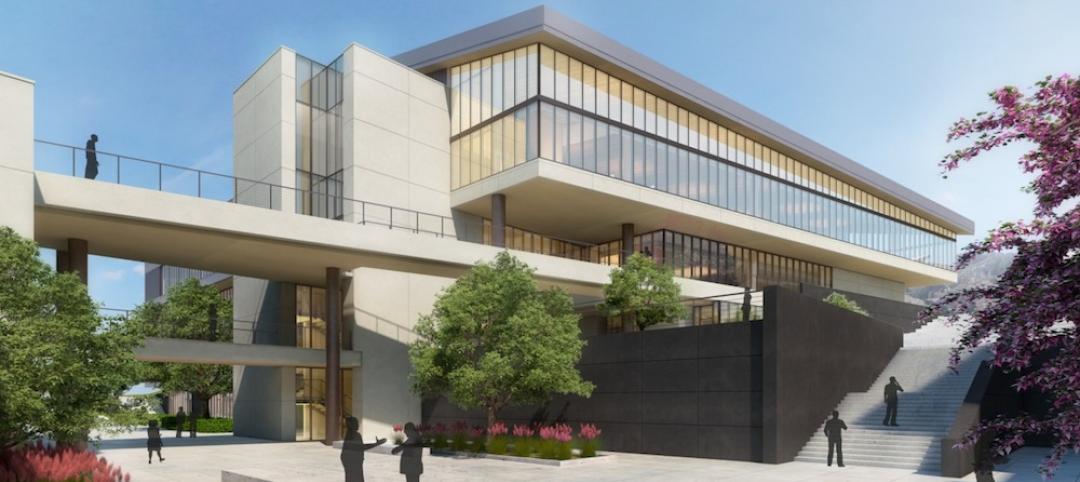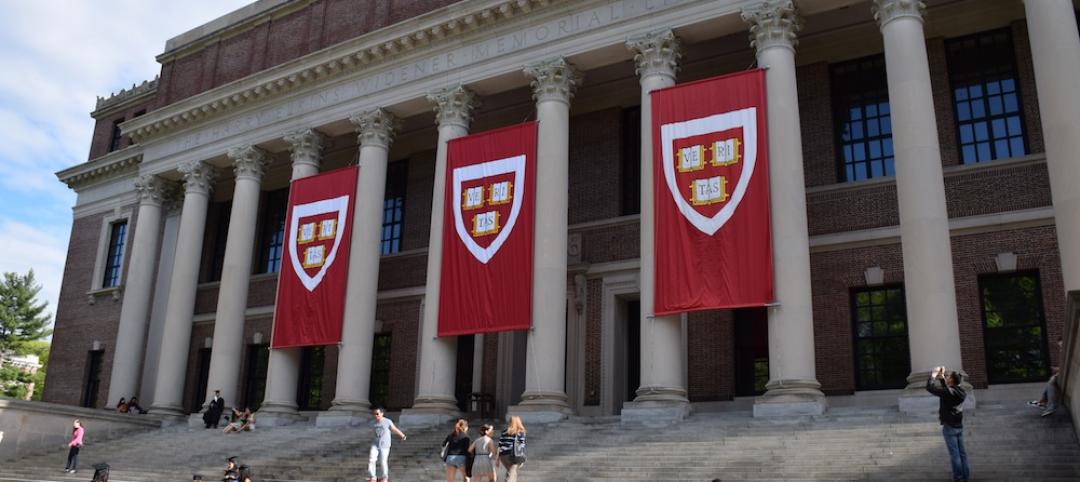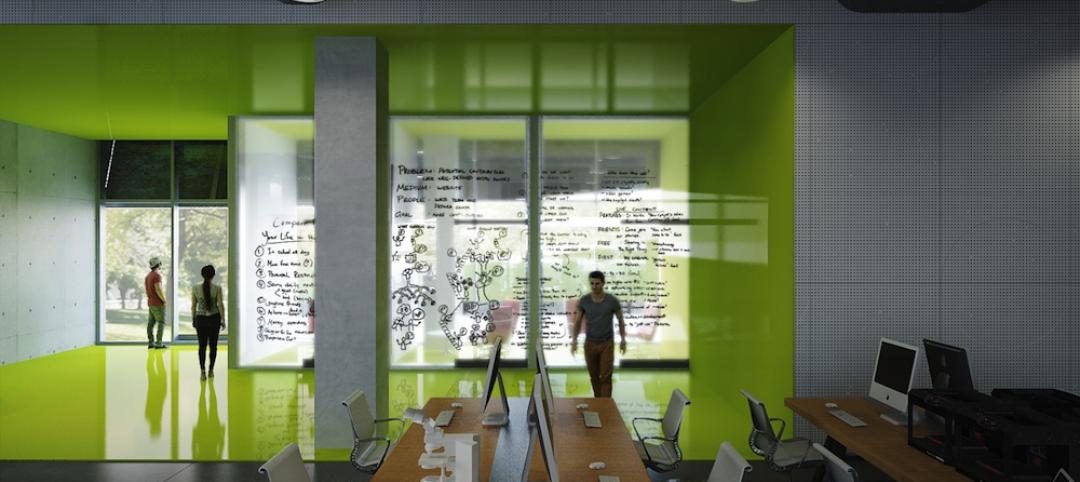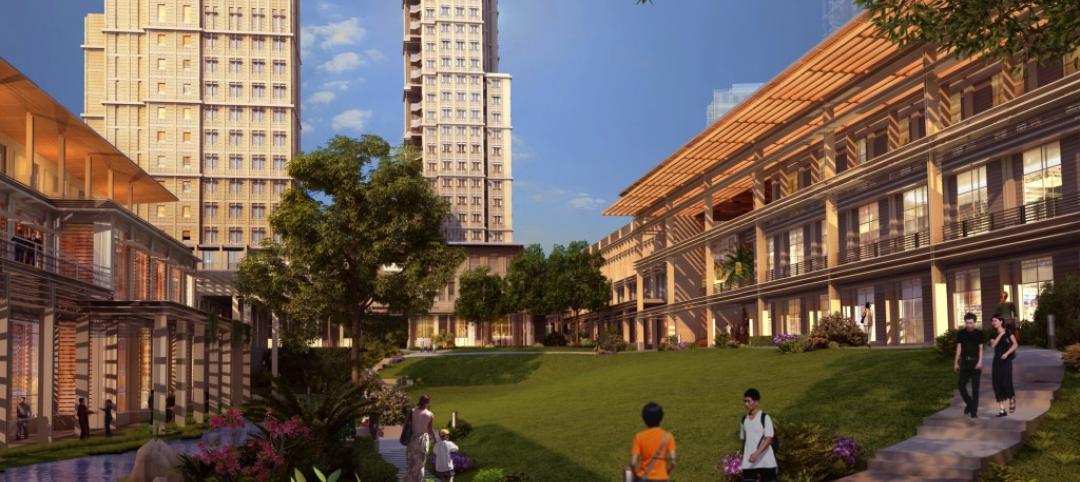The national general contractor Suffolk has had a longstanding relationship with the University of Massachusetts. Over the years it has built nine residential facilities on that institution’s 9,000-student campus at North Dartmouth, Mass., between Providence and Cape Cod, including the 800-bed Pine Dale and Oak Glen halls, and the 1,200-bed Woodland apartment complex.
Last month, the partners broke ground on a $134 million housing and dining complex on Parking Lot 7 near the university’s Campus Center and College of Visual and Performing Arts.
The project, when completed in the fall of 2020, will replace four residence halls that opened in 1976. It includes a 1,210-bed, 267,000-sf housing complex in two buildings, with an estimated cost of $108 million. These facilities will have classrooms, multimedia and study lounges, demonstration kitchens, and recreational spaces. A technology equipped maker space will enable students to work in groups. The buildings will also have soundproof music practice rooms and two computer learning commons.
The housing builldings will flank a $26 million, 38,000-sf student dining commons with an 800-person capacity, which replaces the university’s main dining hall built in 1977. Its design includes a large flat top grill where students can see their meals being prepared.
“Our team has worked in collaboration with the University from the beginning and we are excited to deliver a facility that will meet the unique needs of their students and faculty for decades to come,” says Randy Kreie, Principal and President of DiMella Shaffer, the construction’s design architect.
The residence halls are being built through a private-public partnership between the university and Greystar, which specializes in housing development and management. No state taxpayer funds will be used, and the project won’t add to the university’s debt. (The project is being financed through the UMass Building Authority.)
This is the first major state-funded building project on this campus since 1980, and represents the first phase of Chancellor Robert E. Johnson’s plan to focus capital investment on the 710-acre UMass Dartmouth main campus. (As part of the current project’s overall scope, the campus’s Science and Engineering Building is undergoing a $54 million renovation that is partly financed by $25 million in state funds.) Future initiatives will include renovation and modernization of academic buildings, the campus center, road infrastructure, and athletic facilities.
“We know from studies and our own extensive experience that providing high-quality living-learning environments for students increases graduation rates, retention rates and academic performance,” says UMass President Marty Meehan. “This project represents an investment in student success and student opportunity at UMass Dartmouth, which by extension will benefit the SouthCoast and the entire Commonwealth.”
Related Stories
University Buildings | Mar 11, 2016
How architects can help community colleges promote community on campus
Even in the face of funding challenges and historic precedent, there are emerging examples of how partnership between two-year academic institutions and designers can further elevate community on campus. CannonDesign's Carisima Koenig has a few key examples.
University Buildings | Mar 1, 2016
The 5 most questionable college and university rankings of 2015
SmithGroupJJR's David Lantz identifies five of the most flawed higher education rating systems, including ones with arbitrary categories, and others that equate college with a transactional investment.
University Buildings | Feb 29, 2016
4 factors driving the student housing market
In the hyper-competitive higher education sector, colleges and universities view residence halls as extensions of their academic brands, both on and off campus.
University Buildings | Feb 17, 2016
New ideas to help universities attract and empower STEM students
Educational institutions are focusing on new learning strategies that engage students in activities, enable collaboration across STEM disciplines, and encourage students to use their hands just as much as their heads, as Stephen Blair of CannonDesign writes.
Multifamily Housing | Feb 1, 2016
Top 10 kitchen design trends for 2016
Charging stations, built-in coffeemakers, and pet stations—these are among the top kitchen design trends for the coming year, according to a new survey of kitchen and bath designers by the National Kitchen & Bath Association.
| Jan 14, 2016
How to succeed with EIFS: exterior insulation and finish systems
This AIA CES Discovery course discusses the six elements of an EIFS wall assembly; common EIFS failures and how to prevent them; and EIFS and sustainability.
Greenbuild Report | Dec 10, 2015
AASHE’s STARS tool highlights the university sector’s holistic approach to sustainability
Buzzwords like “living lab” and “experiential learning” are indicative of the trend toward more holistic sustainability programs that incorporate all facets of college life.
University Buildings | Nov 5, 2015
How active design is reshaping higher education campuses
Active design, a dynamic approach to design with a primary focus on people, assists students in learning to make healthy choices, writes LPA's Glenn Carels.
University Buildings | Nov 4, 2015
Yale completes Singapore campus
The Yale-NUS College has three residence halls and two administrative and academic buildings, with courtyards in the middle of them all.
University Buildings | Oct 16, 2015
5 ways architecture defines the university brand
People gravitate to brands for many reasons. Campus architecture and landscape are fundamental influences on the college brand, writes Perkins+Will's David Damon.

















